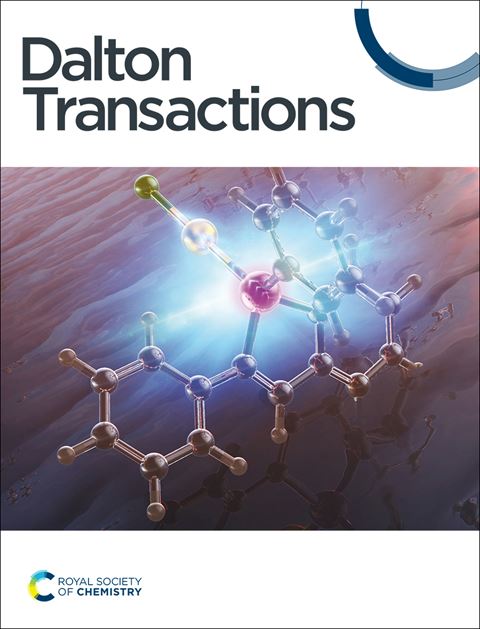Pt/SnO2/Sb2O4 nanoparticle catalyst embedded in Multi-walled carbon nanotubes as active material for electrochemical hydrogen storage inquiries
IF 3.5
3区 化学
Q2 CHEMISTRY, INORGANIC & NUCLEAR
引用次数: 0
Abstract
Hydrogen storage and safe transport are the most important issues for hydrogen energy applications. Hydrogen has the necessary potential to provide clean fuel for heating and transportation because its only product of this combustion is pure water. Hydrogen is identified as one of the most renewable energy sources by supplying an efficient storage method. The electrochemical method with high energy conversion efficiency, through absorbtion/desorbtion mechanisms, is considered an appropriate strategy to achieve hydrogen storage. Hence, we propose a hydrogen energy storage system based on efficient electrode materials and electrochemical method. Due to obtaining high efficiency hydrogen storage, the Pt/SnO2/Sb2O4 nanoparticle catalyst embedded in multi-walled carbon nanotubes (MWCNTs) is synthesized via a facile polyol method, as active material. The sample structure was characterized by different techniques to determine its crystal structure, surface morphology, elements and porosity. Further, the electrochemical hydrogen storage abilities and the specific capacitance values of the as-prepared nanocomposite were assessed in alkaline media by chronopotentiometry analysis. The XRD studies exhibit that the average crystallite size of the Pt/SnO2/Sb2O4 nanoparticle catalyst is estimated to be around 7.5 nm. Also, the BET measurement shows a specific surface area, pore volume and pore diameter of 137.89 m2g-1, 0.3379 cm3g-1 and 9.8 nm for Pt/SnO2/Sb2O4/MWCNTs nanocomposite, respectively. The electrochemical consequences indicate that the incorporation of Pt/SnO2/Sb2O4 nanoparticle catalyst with MWCNTs showed excellent cycle stability and a high degree of electrochemical reversibility as an optimistic active candidate for use in electrochemical hydrogen storage. The maximum discharge capacity of Pt/ SnO2/Sb2O4 /MWCNTs nanocomposite was obtained to be 3480 mAhg-1 after 12 cycles. The higher and excellent discharge capacity of nanocomposite can partially be ascribed to its higher porosity, large specific surface area and the small size of Pt/SnO2/Sb2O4 nanoparticle catalyst.氢的储存和安全运输是氢能应用中最重要的问题。氢具有为供暖和运输提供清洁燃料的必要潜力,因为氢燃烧的唯一产物是纯水。通过提供高效的储存方法,氢被认为是最可再生的能源之一。通过吸收/解吸机制实现高能量转换效率的电化学方法被认为是实现氢储存的适当策略。因此,我们提出了一种基于高效电极材料和电化学方法的氢储能系统。为了获得高效储氢,我们通过简便的多元醇法合成了嵌入多壁碳纳米管(MWCNTs)的 Pt/SnO2/Sb2O4 纳米粒子催化剂作为活性材料。通过不同的技术对样品结构进行了表征,以确定其晶体结构、表面形貌、元素和孔隙率。此外,还通过计时电位分析法评估了制备的纳米复合材料在碱性介质中的电化学储氢能力和比电容值。XRD 研究表明,Pt/SnO2/Sb2O4 纳米粒子催化剂的平均结晶尺寸约为 7.5 纳米。此外,BET 测量显示,Pt/SnO2/Sb2O4/MWCNTs 纳米复合材料的比表面积、孔体积和孔直径分别为 137.89 m2g-1、0.3379 cm3g-1 和 9.8 nm。电化学结果表明,Pt/SnO2/Sb2O4 纳米颗粒催化剂与 MWCNTs 的结合显示出优异的循环稳定性和高度的电化学可逆性,是电化学储氢的理想活性候选材料。经过 12 次循环后,Pt/ SnO2/Sb2O4 /MWCNTs 纳米复合材料的最大放电容量达到 3480 mAhg-1。纳米复合材料较高且优异的放电容量部分归因于其较高的孔隙率、较大的比表面积和较小尺寸的 Pt/SnO2/Sb2O4 纳米颗粒催化剂。
本文章由计算机程序翻译,如有差异,请以英文原文为准。
求助全文
约1分钟内获得全文
求助全文
来源期刊

Dalton Transactions
化学-无机化学与核化学
CiteScore
6.60
自引率
7.50%
发文量
1832
审稿时长
1.5 months
期刊介绍:
Dalton Transactions is a journal for all areas of inorganic chemistry, which encompasses the organometallic, bioinorganic and materials chemistry of the elements, with applications including synthesis, catalysis, energy conversion/storage, electrical devices and medicine. Dalton Transactions welcomes high-quality, original submissions in all of these areas and more, where the advancement of knowledge in inorganic chemistry is significant.
 求助内容:
求助内容: 应助结果提醒方式:
应助结果提醒方式:


